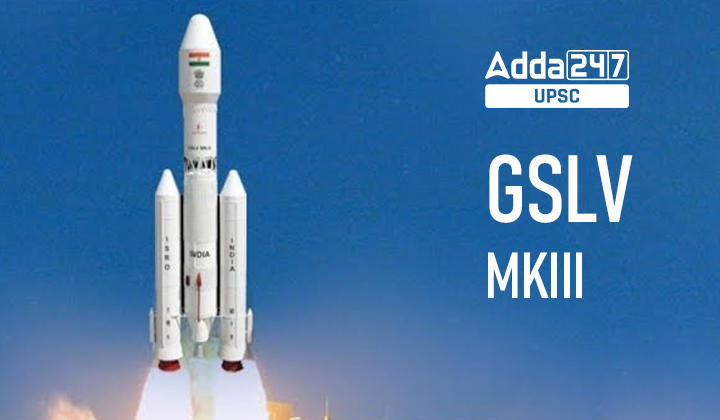Table of Contents
GSLV MK-III: Relevance for UPSC
GS 3: Space Technology
GSLV MK-III: Why in news?
- The Indian Space Research Organisation (ISRO) is in the final phase of preparation to launch 36 satellites as part of a broadband constellation by OneWeb into space.
- This launch will be the first-ever commercial flight of the GSLV Mk3 rocket
- The 36 satellites will be launched into space on a Geosynchronous Satellite Launch Vehicle (GSLV) Mk-III.
- ISRO has redesignated the launch vehicle as LVM-3 from GSLV Mk-III. While the practice of changing the name of the launcher is not uncommon, it is new for India and LVM-3 stands for Launch Vehicle Mark 3.
GSLV MK-III: Why has ISRO changed GSLV MK-III to LVM?
- The sole reason behind changing the name of the vehicle from GSLV to LVM is that the rocket will not deploy the satellites in the geosynchronous orbit. The OneWeb satellites operate in Low Earth orbit (LEO) at an altitude of 1,200 kilometers.
- The geosynchronous orbit, on the other hand, is located 35,786 kilometers above Earth’s equator. It is a prograde, low inclination orbit about Earth having a period of 23 hours 56 minutes 4 seconds.
- A spacecraft in geosynchronous orbit appears to remain above Earth at a constant longitude, although it may seem to wander north and south.
- The GSLV-Mk-III has been configured to deploy the satellites in the LEO with two solid strap-on boosters and a liquid core stage that have been integrated at the second launch pad.
GSLV MK-III: What kind of rocket is GSLV Mk3?
- The GSLV Mk3 rocket is a three-stage heavy-lift launch vehicle developed by ISRO.
- The vehicle has two solid strap-on motors (burns solid fuel), a core-stage liquid booster (burns a combination of liquid fuels) and a cryogenic upper stage (burns liquid hydrogen with liquid oxygen).
- GSLV Mk III is designed to carry four-tonne class satellites into Geosynchronous Transfer Orbit (GTO) or about 10 tonnes to Low Earth Orbit (LEO), which is about twice the capability of its predecessor, the GSLV Mk II.
GSLV MK-III: Why it is important to use GSLV instead of PSLV for a commercial launch?
- Thus far, ISRO has purely relied on its PSLV rocket (that can carry up to 1.75 tonnes to Low Earth Orbit), to do commercial launches.
- The addition of the GSLV MK3 to this list would mean that India can make a greater impact in the international market and thereby earn revenue from launching heavier customer satellites.
- While India’s GSLV Mk3 has flown all four Indian national missions successfully to date, this will be the first time that the rocket will be performing the paid service of ferrying customer satellites to space.
GSLV MK-III: ISRO’s Launch Vehicles
- ISRO uses two launch vehicles at present – the PSLV and the GLSV (Geosynchronous Satellite Launch Vehicle).
- But these also have several variants. The PSLV is ISRO’s most reliable rocket, with 52 successful launches out of 54 attempts.
- The GSLVs are much more powerful rocket and meant to carry heavier satellites deeper into space.
- Till date, ISRO has used 18 GSLV rockets for missions — four of these ended in failure.
- The Indian space research agency has also developed a launch vehicle particularly for small and micro-satellites — Small Satellite Launch Vehicle, or SSLV — aimed at rising global demand for such satellite launches.



 TSPSC Group 1 Question Paper 2024, Downl...
TSPSC Group 1 Question Paper 2024, Downl...
 TSPSC Group 1 Answer key 2024 Out, Downl...
TSPSC Group 1 Answer key 2024 Out, Downl...
 UPSC Prelims 2024 Question Paper, Downlo...
UPSC Prelims 2024 Question Paper, Downlo...
